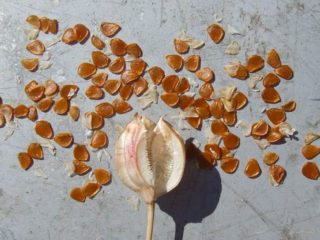Content
It is generally believed that planting tulips in spring is not the best solution. Traditionally, this is done in the fall to wait for them to bloom in April-May next year. However, it is at the beginning of spring that a wide variety of varietal tulip bulbs appear on sale, having bought which, of course, you really want to quickly find a place for them in the garden, root them and admire the results. It also happens that for some reason the gardener does not have the opportunity or time to plant tulips before winter. In this case, spring planting can be done. The most important thing is to do it correctly, taking into account the climate in the region and the peculiarities of the local weather. Experienced gardeners assure that such tulips can bloom even this year.
Is it possible to plant tulips in spring?
It is certainly possible to plant tulips in the spring. Such planting will be based on other rules that distinguish it from the usual autumn planting, but they are unlikely to seem complicated.The key is to properly prepare the bulbs to take root in the ground in the spring and plant them at the right time and weather.
When to plant tulips in open ground in spring
It is recommended to plant tulips in open ground early in the spring. The most basic condition is that the snow has already melted and the soil at a depth of 10 cm has had time to warm up to + 8-9 °C.
It is important to plant tulips in the spring, taking into account the weather forecast: no serious frosts should be expected in the next 20-25 days after the target day. Otherwise, the bulbs will most likely die, and even if they survive, they will not bloom soon.

In order for tulips to take root successfully in open ground in the spring, the soil at a depth of 10 cm must warm up to + 8-9 ° C
Thus, the approximate time for planting tulips in the ground in the Moscow region in the spring is mid/late March and early April. In regions located further north, suitable conditions may occur much later, sometimes even in early May.
Will tulips planted in spring bloom?
There are differing opinions as to whether tulips that were planted in the spring will bloom this season.
Some gardeners claim that in this case, flowering can only wait until next year, since the flower buds of the bulbs simply do not have time to ripen.
Others believe that, knowing the correct agricultural technology and the secrets of preliminary preparation of bulbs, you can plant tulips in the spring, expecting to see them in all their glory this year. However, the buds on them will appear later than usual - not earlier than June.In addition, the flowering of these tulips will not be as abundant and friendly as those that are traditionally planted in the fall.

Tulips planted in spring may bloom this season, but much later than usual and not too abundantly
How to plant tulips in spring
When planning to plant tulips in open ground in the spring, the gardener should have a good understanding of the features of this procedure. The key role will be played by the correct processing of the bulbs - newly purchased or stored in the fall. In addition, it is important to correctly select and prepare a site for a flower garden, then plant the plants, following the process technology in detail, and organize proper care for the growing tulips.
Selection and preparation of a landing site
When choosing a site on which to plant tulips, you should proceed from what growing conditions they prefer. A flower garden for them in the open ground should have the following characteristics:
- be well lit and sufficiently warmed by the sun (those who plan to plant tulips in the spring in cold regions - in Siberia, the Urals - should pay particular attention to this requirement);
- be protected from strong winds by a small fence or barrier of bushes;
- the soil reaction should be neutral or slightly alkaline;
- optimal soil composition – light sandy loam, loam;
- the soil must be well-permeable to moisture, since if the water stagnates, the bulbs will rot.
Before planting tulips, the soil in the area needs to be dug up to the depth of a spade bayonet. At this stage, you can additionally add organic fertilizers (rotted compost) or, if the soil is too poor, enrich it with mineral fertilizers.Also, if necessary, during the digging process, you can add coarse sand to the soil, which will improve its water permeability.

The site chosen for spring planting of tulips should be sunny, protected from the wind, with light, nutritious, well-drained soil
Pre-planting preparation of bulbs
It is very important to properly prepare tulip bulbs that are planned to be planted in the spring. The following measures will need to be taken:
- If the planting material has been stored all winter, it should be carefully sorted and inspected, discarding those specimens that have significantly damaged the upper integumentary layer or are also damaged by fungus. Such bulbs should not be planted - they can grow into weak, diseased, poorly flowering plants.
- Next, they should be hardened by placing them on the bottom shelf of the refrigerator or in the vegetable compartment and keeping them at a temperature of about + 4 ° C for at least 1 night (and preferably longer). This is especially true for purchased planting material, the storage conditions of which are unknown. This procedure will help strengthen its vitality.
- In order to protect against diseases and pests, the bulbs should be immersed in a slightly pink solution of potassium permanganate or a decoction of pharmaceutical celandine at room temperature. This should be done half an hour before the tulips are to be planted in the ground.
Immediately before planting tulip bulbs in the ground, they will need to be carefully freed from their dense outer skin. This will help plants get more nutrients from the soil.

One of the key points to successful spring planting of tulips is proper preliminary preparation of the bulbs
Landing rules
Spring planting of tulips in an open area is carried out as follows:
- On a dug up and loosened bed, grooves are laid at a distance of 25-30 cm from each other if large bulbs are to be planted, and 10-15 cm if the planting material is small. The depth of the rows also varies. For large bulbs it will be 10-15 cm, for small ones 5 cm is enough.
- Water the prepared grooves with water.
- Lay the bulbs in rows with their sharp ends up, leaving 7-10 cm between them.
- Sprinkle the top with fertile soil, level the surface with a rake and water again.

The approximate planting depth of tulip bulbs depends on their size
Watering and fertilizing
Tulips planted in spring require regular moderate watering until the end of the flowering period. The soil must not be allowed to dry out. The amount of water should be such that it is enough to penetrate deep into the bulk of the roots (10-40 liters per 1 sq. m of bed). It is important to ensure that moisture does not get on the leaves, as it can cause burns.
Fertilizing, done efficiently and in a timely manner, will also ensure that tulips planted in the spring will produce beautiful flowers and form strong bulbs. This should be done three times:
- after emergence;
- shortly before the tulips bloom;
- as soon as flowering ends.
The easiest way is to use a ready-made complex fertilizer intended for tulips. But you can also add fertilizers separately (nitrogen-containing preparations, superphosphate, potassium sulfate).
Rules for caring for tulips after planting in spring
The rules for caring for tulips that you decide to plant in the spring are quite simple:
- From time to time it is necessary to inspect the beds, identifying and removing ungerminated bulbs, as well as young shoots with signs of disease.
- From the moment small sprouts appear, the soil around them must be systematically carefully loosened, especially after watering or rain. This will ensure better access of oxygen to the roots and timely evaporation of excess moisture.
- You should definitely pull out the weeds to prevent the appearance of pests, as well as to rid the flowers of “competitors” in the struggle for water and nutrients.
- During the flowering period, it is important to promptly remove fallen petals from the ground to prevent them from rotting and the risk of spreading infections.
- The stems of faded tulips that were planted in the spring should not be cut off immediately after they drop their petals. You need to wait until they turn completely yellow so as not to harm the ripening bulbs.

Large-sized bulbs are usually planted one at a time, while small specimens can be placed in one hole, 5-7 pieces each.
Advice from experienced gardeners
Experienced flower growers are not afraid to plant tulips in the spring and know how to get them to bloom in the coming summer. Here are some tips they can give:
- a month before planting in open ground, you can “force” the bulbs by placing them in a container or box half filled with nutrient substrate, sprinkle a 5 cm layer of soil on top and keep them indoors in a sunny place;
- large specimens should be planted in open ground one at a time, small ones can be placed 5-7 pieces in one hole;
- When preparing a bed for planting, under no circumstances should you add fresh manure as fertilizer - this can contribute to fungal infection of the planting material;
- You can determine how deep to plant tulips by eye: each bulb needs to be buried three times the size of the soil;
- Do not press planting material into the ground - there is a risk of damaging the developing root system;
- It is unacceptable to plant tulips in the same area for longer than 5 seasons in a row.
Conclusion
When deciding to plant tulips in an open area in the spring, the gardener can easily achieve their flowering this summer. But at the same time, he must take into account that the first buds in the garden will appear much later than if the bulbs were planted in the fall. In addition, this season they are unlikely to please with abundant flowering and will quickly fade. When planning to plant tulips in the spring, you need to correctly determine the time when the earth will warm up properly: in the Urals, Siberia and central Russia, the optimal timing will be different.Provided that the planting material is properly prepared, the rules of agricultural technology are followed, and the plants are properly cared for, there is no doubt that the experience of spring planting these flowers will be successful.








